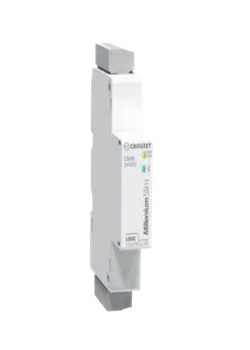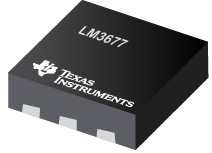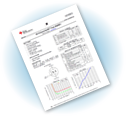Smart water monitoring Down Under
.jpg)
Providing high quality water supplies is an essential service delivered by municipal authorities and utility companies around the world. Maintaining water quality requires constant monitoring and testing to ensure accurate measurements are being taken. Traditionally this has involved time-consuming calibration and maintenance.
A shire council in New South Wales, Australia, however, has decided to do things differently and turned to Bürkert Fluid Control Systems for an automated precision monitoring solution that saves them time and money.
The Kempsey Shire Council is a local government utility that is responsible for providing water and wastewater services to the Kempsey District, 350km north of Sydney. At the South West Rocks recycled water treatment plant, final treatment of effluent includes ultra-filtration, UV disinfection and the addition of chlorine, all of which are required to achieve the necessary standards of water quality.
To ensure that the water quality standards are being maintained, the shire council uses a monitoring station, equipped with sensors for measuring pH and chlorine. However, these sensors use reagents to establish the measurements and as an ageing system, it was becoming unreliable and required a lot of maintenance. Of greater concern was the fall-off in accuracy and the need for more frequent recalibration, which required increasing levels of operator intervention.
Improving smart water monitoring accuracy
Michael Coleman, Area Sales Manager for Bürkert, takes up the story: “We were in the process of looking at potential markets for one of our latest innovations and happened to be talking to representatives at the treatment works. We had an opportunity to discuss the features and benefits of our Online Analysis System Type 8905 for water at a time when they were experiencing a few issues with their own installation.”
Following the initial approach, alternative systems were also considered and compared to Bürkert’s solution. However, several benefits stood out, not least the significant improvement in accuracy and the huge reduction in maintenance.
Tristan Nowland, an Instrument Technician, who has been involved in the installation and operation of the new water analysis system, reflects on the depth of Bürkert expertise: “I liked being able to talk with their water industry specialists and local engineers at any time when I had specific questions, and felt comfortable that Bürkert were confident in their knowledge of the system and my application needs.”
Data accuracy and the minimal drift of results is very important in establishing water quality standards and ensuring that local and federal legislation is being met. Proving the capabilities of a monitoring system in a demanding recycled water treatment plant can take time. Therefore, the treatment works decided to install three Bürkert water quality analysis systems for performance evaluation.
Flexible Smart water monitoring installation
One of the first advantages was the compact modular design of the system that makes it very flexible in terms of installation. The component parts consist of an integrated HMI display, input/output modules, sensor cubes and a cleaning system, all of which can be wall or panel mounted, and in Kempsey’s case, built into an existing cabinet.
Once installed, the individual sensor modules or ‘cubes’ are essentially ‘plug and play’ on a dedicated backplane, which meant the engineers from the treatment works soon had the complete system functioning effectively. There is a simple process to set up the alarm parameters for each sensor cube, ensuring that any anomaly in the process is identified quickly.
Greg Morrow, Instrument Technician, at the South West Rocks plant, commented: “We are very pleased with the new system. Since it was installed, there has been no need to recalibrate the chlorine or the pH sensor cubes and their performance has been verified using portable laboratory equipment such as a DPD1 photometer reference test for free chlorine. Furthermore, the sensors’ response time to changes in our process has been virtually instant, far exceeding the performance of the alternatives we looked at.”
Integrated communication
The Bürkert Online Analysis System can communicate with existing control protocols and with personnel both on and off site, ensuring that any deviation from the water quality criteria is notified immediately. This simple integration helps to reduce the time between a deviation from process parameters and the remedial action required to correct the situation.
Tristan continues: “After ten months in operation, the accuracy has been excellent; there has been no drift in either the chlorine or the pH measurements. Additionally, the amperometric chlorine MEMS sensor chip is not affected by chloramines, providing true chlorine analysis.
“Another major benefit is the fact that the cubes are not reagent-based, and so the maintenance requirement for this system is greatly reduced. The Bürkert system is very advanced. The initial investment came at a higher value, however, the reduction in maintenance resources required, meant that the investment has been worth it.”
The installation at South West Rocks highlights several advantages of the Online Analysis System Type 8905 to the municipal water sector. It has a very compact footprint, making it easy to install in existing cabinets and its modular design allows each system to match the requirements of the application. The ability to maintain its accuracy without repeated calibrations has delivered tangible savings in time and money for the water treatment plant.
Exceeding smart water monitoring expectations
Since the first units were implemented, Kempsey Shire Council has installed an additional system at the Fredrickton Reservoir, which is also monitoring pH and chlorine. This site endures extremely hot summers with no detrimental effects to the performance of the sensor cubes and has achieved almost a year in operation without the need to recalibrate.
The performance and ease of installation of these systems has prompted several other reservoirs and water treatment plants to be equipped with the Bürkert Online Analysis System. There is a range of different sensor cubes available and in the other locations, they’ve included sensor cubes for turbidity and oxidation reduction potential (ORP/redox) to monitor particular aspects of the water on each site.
These systems are designed to provide all the analysis data required for most applications - as well as the ability to act as a data logger and provide the necessary evidence that water quality standards are being maintained. Wes Trotter, Manager of Water and Wastewater at Kempsey Shire Council, concluded: “I was sceptical at first, but the Bürkert Type 8905 online water quality analysis system has far exceeded my expectations.”
Similar articles
More from Burkert Fluid Control Systems
- Continuous water quality analysis for boreholes 6th July 2020
- Controller delivers precision microlitre dosing 14th May 2020
- Multi-medium testing facility for fluidic components 19th March 2020
- Micro precision for time-pressure dosing 10th December 2019












Write a comment
No comments